Achatina immunakulata: subspecies and features of the content
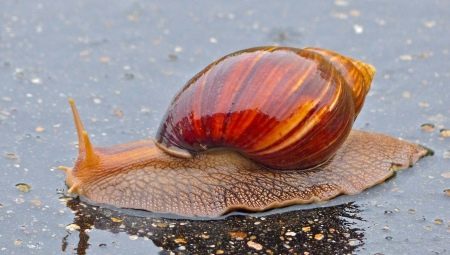
Achatina Immaculata is considered one of the most popular snails, and there is nothing surprising in this - Immaculata is a very unpretentious and at the same time beautiful creature, which, no doubt, can become a decoration of any aquarium. Let's dwell on the features of this snail and the intricacies of caring for it.

Description
Translated from Latin, the name "Achatina Immaculata" is translated as "flawless" or "spotless." Thus, a parallel is drawn with the peculiarities of breeding these snails. As is known, they reproduce by self-fertilization, so you can make a reference from the name of the mollusk to the virgin conception.
A distinctive feature of Achatina Immaculata is a small shell with a rather smooth structure. The shell is conical in shape, the narrowing is smooth, while the apex is pointed, usually of a sandy or pale beige shade. The total size of the shell varies from 10 to 15 cm, in adult mollusks it has about 7 curls, while the very first are light, but darken as they move away - the very last loop is distinguished by a rich dark brown color with a pronounced reddish tint, even stripes without any either stains.
Columella is usually pinkish, purple or crimson. The body is beige with a slight red tint. There is an even light brown strip along the surface of the neck. The leg is rather soft with a pronounced net-like pattern, the horns are shortened.
In nature, Achatina Immaculata lives in the east of the African continent, but it can be found in many other parts of the world. Due to its unpretentiousness to living conditions, it feels great in home terrariums.
There are 3 types of Immaculum in total:
- panther;
- Lamarckian;
- two-tone.
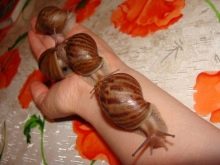
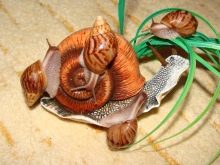
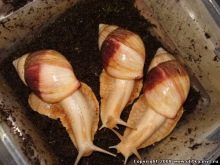
All of them can coexist with each other, as well as with reticulates and fuliks, however, several species should be planted in one container with care, constantly keeping the relationship of individual individuals under control - Immaculates can bite their neighbors, and the victims of the attack experience stress, which leads to stunted growth and development.
Conditions of detention
Achatina Immaculata is extremely unpretentious and undemanding to the conditions of detention, nevertheless, there are still some subtleties of caring for this creature.
These snails love space, so the aquarium for them must be selected based on the proportion of 10-15 liters for each individual.
Despite the small size of Achatina, they are very active. Fallen leaves, coconut substrate, or moss are the best options for filler. It is important that the soil is of the highest quality, since the immaculates like to bury themselves in it for the day's rest and lay their eggs there. But unrefined peat is not good - it will create a too acidic environment, which has an adverse effect on the pet, and you should not lay out the bottom with clay and crushed tree bark. The soil is poured in a layer of 7-10 cm, constantly kept moist. Every month, the substrate should be washed and partially replaced with fresh.
Do not forget to keep the terrarium clean and regularly remove old branches and get rid of rotten snags.
From time to time, you need to wash the snails themselves - it is best to use warm water for this.

In nature, Achatins live in a hot climate, so it is necessary to provide an appropriate temperature regime, it is desirable that the air in the tank be warmed up to 25-27 degrees. At a lower temperature, Achatina can get sick, and at a higher temperature, they hibernate and stop growing.
The optimum humidity is 80%, in order to maintain this level, you should spray the terrarium with a spray bottle or put a small container in it with water every day.
Keep in mind that the Achatins hardly tolerate abrupt changes in the conditions of existence, the reaction can be a suspension of development or stress, such negative consequences can be quite long and last up to a month, and the weakest individuals can even die from exhaustion.
It is not necessary to place additional lamps in the tank, this is not necessary, since the level of illumination is not of fundamental importance in keeping snails. Moreover, it is in the dark that the immaculates are active, and during the day they are buried in the substrate and sleep... However, if you have any plants in your terrarium, you still have to buy a lamp, otherwise the green pets will not survive.
Some representatives of snails immaculate hibernate from time to time, usually the period of diapause lasts a couple of weeks. It is not worth disturbing them during the rest period - if you try to wake up the snail, it will most likely wake up and fall asleep again, so all your attempts will lead to nothing. If your pet will sleep for more than 3 weeks, it should be woken up, offered food, and then left alone again.
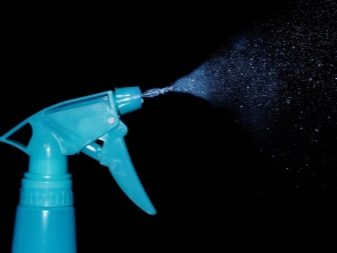

Feeding
There are no difficulties with the maintenance of Achatina Immaculata with feeding, since these representatives of their species are extremely undemanding to food. With great pleasure they will eat fruits, fresh vegetables and juicy greens offered by the owner. In order for molluscs to fully grow and develop, they need to regularly receive foods that contain proteins, as well as rich in calcium - these micro and macro elements strengthen the structure of the shell and allow the immaculate to quickly gain the desired weight. Usually, crushed eggshells, a piece of chalk and cottage cheese are added to the feed as sources of the necessary substances; ready-made vitamin and mineral complexes can also be purchased at any pet store.
It is strictly forbidden to include salt, semolina, as well as bakery and other flour products in the snail's diet.
Feeding young animals is no different from the diet offered to adult pets.
The very first food is usually the pieces of the shell from which they hatched, in addition, from the first days of life, Achatina can be offered greens (lettuce or spinach).
It is very important that there is always a full bowl of water in the terrarium. Please note - if the snail is small, then the saucer should also be shallow; in a deep vessel, mollusks that were born recently may drown.
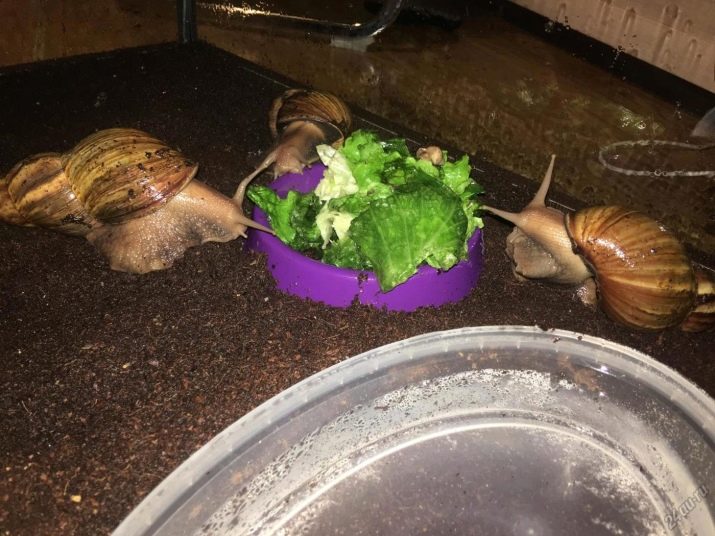
Reproduction
Achatina Immaculata, like other snails, are hermaphrodites. These creatures reach sexual maturity by 6 months of age, although there are cases when young individuals also made their first clutches at 4 months.
Usually, a snail lays about 100-200 eggs at a time, and they can have different sizes - from 4 to 7 mm, among them the percentage of fatty ones is quite large, from which new snails do not hatch.
It is very easy to understand that the snail will soon lay a clutch - usually 5-7 days before it begins to refuse to eat.
Quite often, after laying eggs in snails, care takes place. If the mollusk has not gone too far, then you can give it time to recuperate and rest, at this moment it needs to be fed strongly and variedly and not be disturbed if the pet starts to sleep. If the snail crawls far beyond the turn, then it will need your help to return. In any case, at this time you need to feed your Achatina with juices, fruit and vegetable purees, you can offer milk. It will also be useful to bathe your snail in a weak solution of blue clay.
The incubation period usually lasts from 4–5 days to 2 weeks, but depending on the level of humidity and air temperature, it can deviate up or down.
Achatina Immaculata is a very beautiful, peaceful and very unpretentious snail. If you strictly adhere to all the tips for feeding the mollusk and create a favorable habitat, then your pet will delight you with its interesting appearance and excellent appetite for quite a long time.
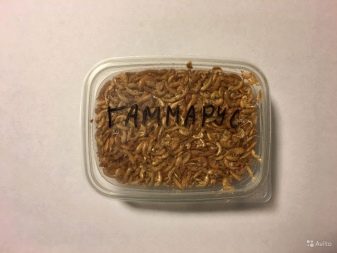
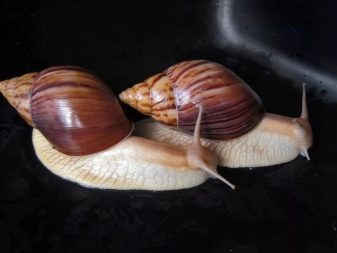
Tips for keeping Achatina Immaculum can be found in the video below.








